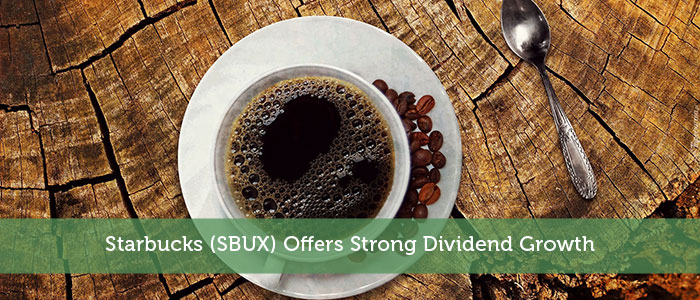Starbucks Corporation’s (Nasdaq: SBUX) growth rate might be slowing, but it’s making up for it by shifting its focus toward sending money back to shareholders.
With a price-to-earnings ratio of about 29, this stock is on the high end of valuation compared to other stocks I tend to buy, but in my opinion the numbers justify the current stock price, and options can help improve cost basis even further.
A Greater Focus on Dividends and Buybacks
Earlier this month, Starbucks released fiscal fourth quarter and 2017 year results, and the investor response has been mixed.
The company used to forecast 15-20% long-term EPS growth per year, but has reduced that to at least 12% annual EPS growth or higher. Here’s their full long-term guidance:
For a company that already has over 27,000 stores globally, maintaining high single digit revenue growth and a whopping 25% return on invested capital is incredible. Over the last 12 months, their return on invested capital has been about 30%, and their return on equity has touched 50%, without using much leverage.

Their revenue has nearly doubled over the last six years. If the company maintains 7% annual revenue growth going forward (the bottom end of “high single digits”), it’ll mean a 50% increase in revenue over the next 6 years. To put that into perspective, McDonald’s (MCD) has seen flat revenue and income over the same time period, yet their stock trades at nearly as high of a valuation with a price-to-earnings of about 24.
To offset this reduction in expected growth rates, Starbucks boosted its quarterly dividend 20% from $0.25 per quarter to $0.30 per quarter (up to roughly a 60% payout ratio from earnings per share), and announced plans to spend $15 billion in total on dividends and share buybacks over the next 3 years. To put that into perspective, the company paid about $8 billion in dividends and buybacks over the past 3 years. The dividend yield going forward will be a little over 2%.









Leave A Comment